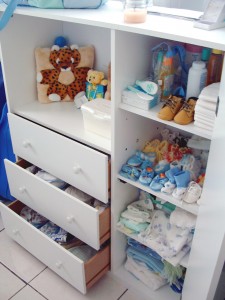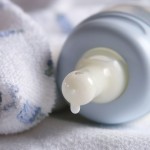
UPDATE- JANUARY 9, 2009
On January 8th, the U.S. Consumer Product Safety clarified this law in a press release, and stated: “Sellers of used children’s products, such as thrift stores and consignment stores, are not required to certify that those products meet the new lead limits, phthalates standard or new toy standards.”
While this is good news for the second-hand shops, I still hope they clarify the position for home-made toys. Thanks to Deb and AK who commented on this post and left the link to the revised information. I would like to point out that I wrote this post on January 6, two days before the clarification was released.
*****************************************************************
I buy most of Ryan and Cole’s clothes second-hand. In the town I live in, there are a few really nice second-hand stores, as well as a semi-annual kids consignment clothing sale from Just Between Friends. Most of my friends buy their children’s clothes second-hand as well.
It makes great financial sense for several reasons. When you factor in how much new clothes cost, and the fact that kids grow out of these clothes so fast, it doesn’t seem like you really get your money out of the clothes. If you are the parent of a boy, you know how fast they can wear holes through their pants. I remember buying Ryan a new pair of fleece pants last winter. I think I paid $20 for them, and he had a hole in them the second time he wore them.
I can usually go to the Just Between Friends Sale twice a year, and buy all the clothes the boys need, including pajamas, shoes, coats, and even find high quality toys too. I spend less than if I bought them just a few outfits brand new from some of the popular kids stores. However, it could be come illegal on February 10th, for second-hand children’s clothing and toys to be sold.
A new federal law will go into effect on this date, the Consumer Product Safety Improvement Act. It requires all products sold for children, including clothing, to be tested and certified as lead-free. In theory this sounds like a great law- after all, we don’t want our kids exposed to lead, but in reality it is not practical for second-hand clothing and toys to be tested.
Many business owners who sell second-hand children’s clothes, and charitable organizations such as The Salvation Army, are anticipating having to throw thousands and thousands of clothing items away. Some businesses will have to close. Parents who rely on stores to provide affordable clothing, would have to cut money elsewhere from their budgets. None of the second-hand items will have the lead free certification, so selling them will be illegal.
Handmade and second-hand toys, will also become illegal to sell, unless the creators can pay up to $4,000 per item to have each toy tested. Obviously small business owners can not afford to pay this for every second-hand item they carry.
I am all for making sure our children’s clothing and toys are lead free. But this law seems to go too far for second-hand items, and has the potential to harm families, business owners, and the economy overall. I don’t want to see the wonderful second-hand stores in my town close. They provide a very valuable service to the families in my community.
Many shop owners are contacting their Congress representatives hoping to have the law amended to allow the sale of certain types of clothing and toys. I hope an amendment passes, otherwise, saving money on children’s clothes and toys, will be a thing of the past.
You can contact your Congress representatives to voice your opinion, and you can check out the Homemade Toy Alliance for more information and petitions you can sign.
I would love to hear your opinions on this issue. Are you worried about lead in children’s second-hand clothing and toys, or do you think this law goes to far in banning these items?













